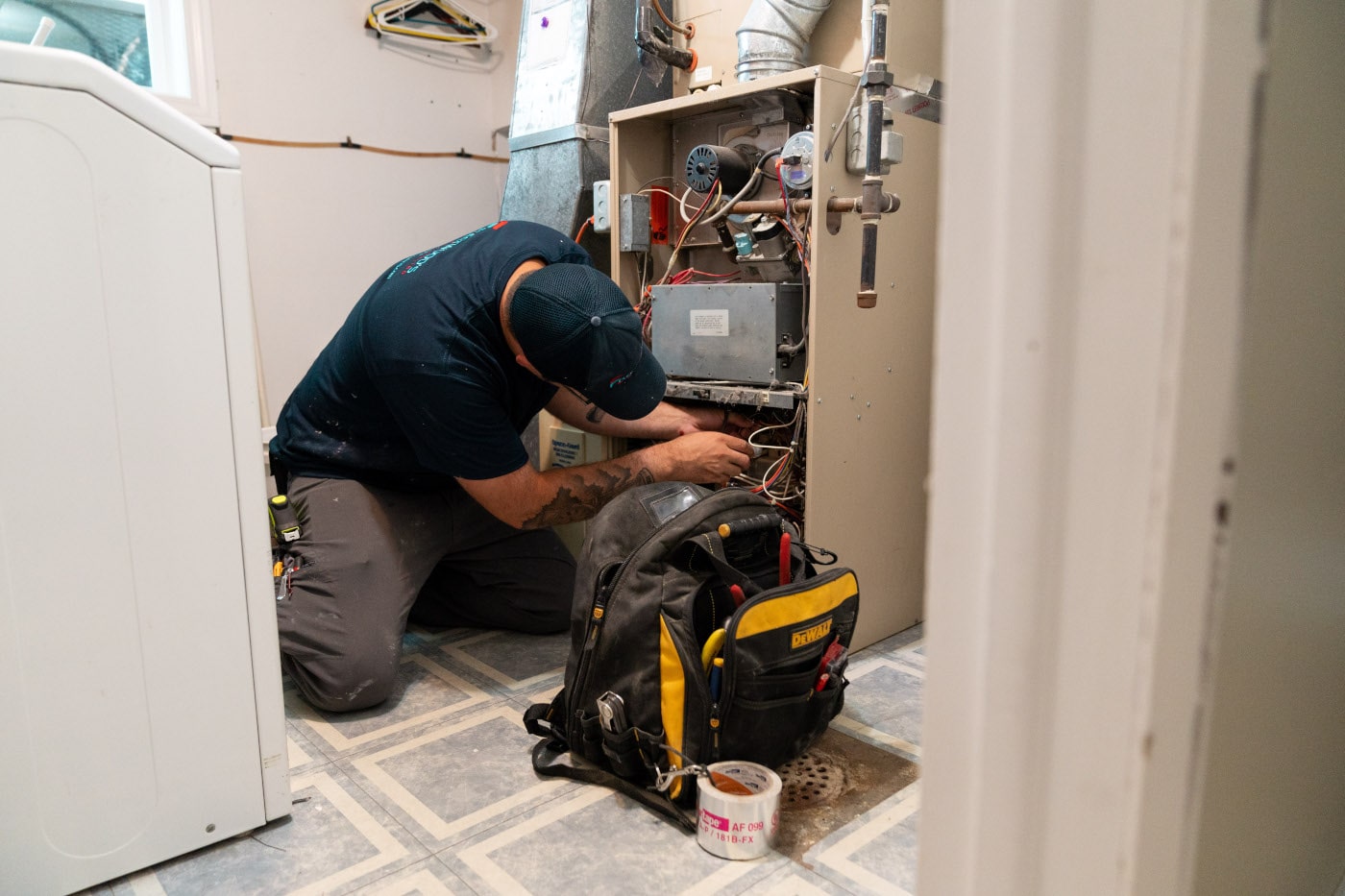BOOK ONLINE
Why Is My Furnace Leaking Water? Key Things to Check
In the dead of winter, the last thing you want is to notice your furnace leaking water. A water leak can indicate a clogged drain line, a dirty air filter, a broken heat exchanger, or any number of other issues.
But, furnace leaks aren’t the end of the world!
Whether your furnace is leaking water from an outdoor vent, a condensate drain line, or elsewhere, high-quality furnace repair is only a phone call away. But, what should you check before calling a professional? Besides noticing the water leaking, what else should you be on the lookout for?
What makes a furnace leak water?
Since water damage can be a catastrophic occurrence, it’s really important to take action if your furnace or air conditioner is leaking. Whether it’s caused by faulty secondary heat exchanger, a damaged condensate pump, or anything else, leaks can reduce energy efficiency and damage your HVAC system.
But, while there’s a need to take action, there’s not benefit to panicking if you see water leaks. Here’s a short list of possible causes that may help you know when you do – and don’t – need to call an HVAC professional.
Clogged air filter
In most cases, a blocked filter is the easiest issue to solve on a leaky furnace unit. Dirty filters can make your furnace work harder to move air, resulting in condensation buildup that can then drip onto the floor.
Condensation leak
Accumulated condensation is the #1 cause of furnace water leaks. Especially in the colder months, when hot air rises, causes condensation to form, and then drips onto the surface below. It’s best to reach out to an HVAC technician to fully diagnose and address this issue.
Exhaust pipe
Another common problem, especially with a high-efficiency furnace, is a damaged exhaust pipe. Intended to drain water in a controlled way, damage to these pipes can cause water leakage. Even in a conventional furnace, loose joints or compromised pipes can result in leaks.

Are high-efficiency furnaces more prone to leaks?
Yes, high-efficiency furnaces do tend to be more prone to leaks. Also called a high-efficiency condensing furnace, these furnaces have an additional heat exchanger. While this second exchanger allows the equipment to extract more heat, they also allow more time for air to cool, which can lead to leaks.
But, no matter your furnace type, it’s essential to have a condensate drain hose and drain pan installed. An experienced HVAC tech can work with you to install a floor drain or condensate trap to prevent damage from leaks.
Need to repair or replace a leaking furnace?
At Fleetwood’s Heating & Cooling, we offer the area’s most comprehensive furnace repair services. No matter the issues that you’re experiencing, you can count on us to deliver the service you need to get your HVAC equipment back up and running.
Whether you need a new evaporator coil, a condensate pump, or a cleared drain line, we’re here. So, if you’re having trouble with your furnace, don’t hesitate to reach out to us today. Our team will work with you to diagnose the issue, offer solutions, and perform all necessary repairs.
